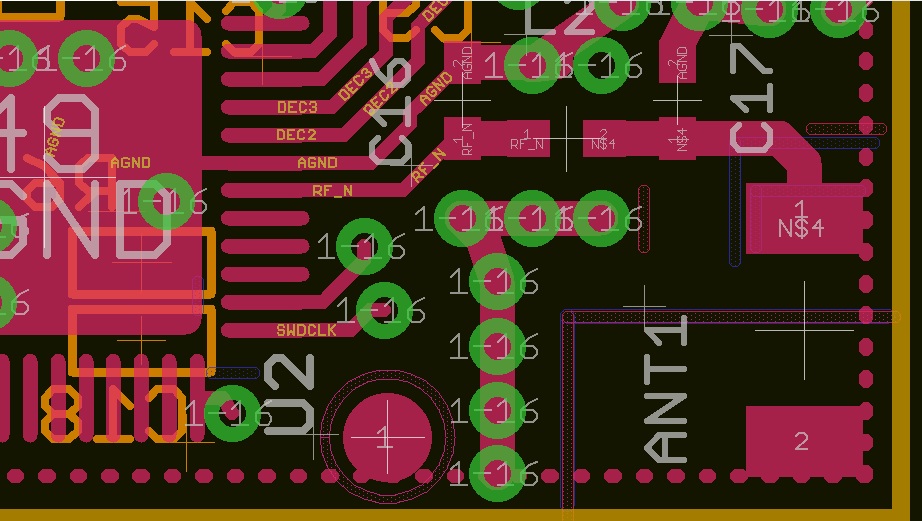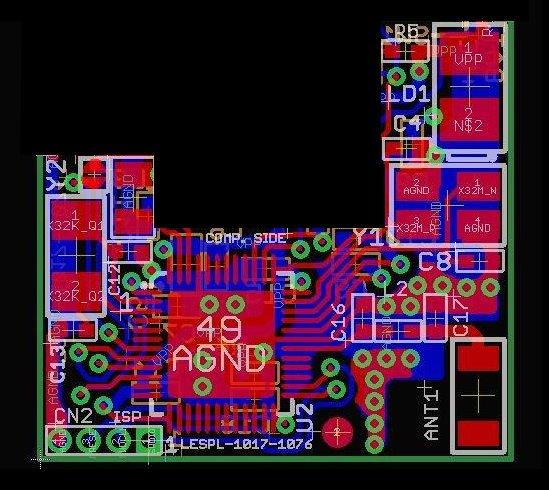
Hello All,
Please check above image, showing antenna layout of my custom board. I am receiving error frames at ~40ft distance on sniffer. Please check whether antenna layout is ok or not. Please let me know if more info required.
Antenna Part: 2450AT18A100, Make: Johanson Technology.
Edits for comment: Schematic: nrf_antennaFor review .pdf
Layout Image showing ground plane and surrounding components:

Regards,
Sharad.

